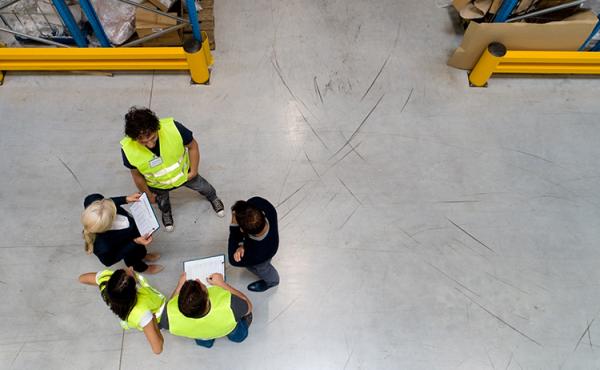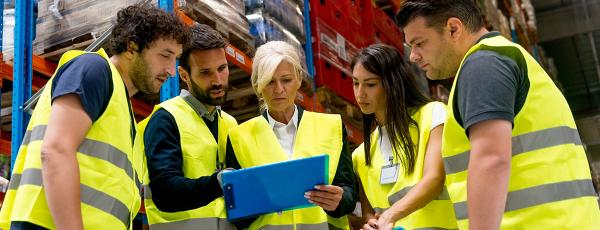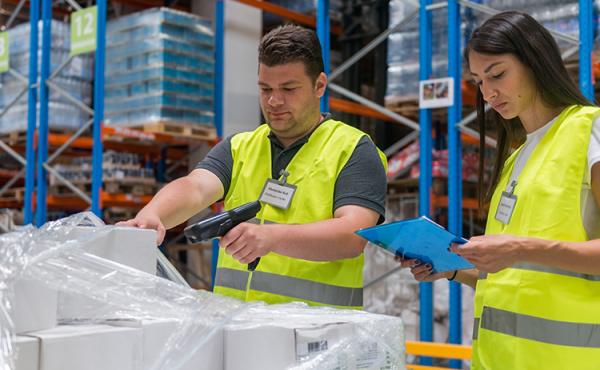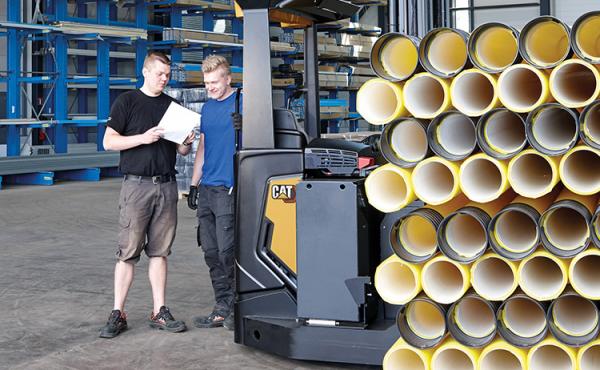Train your warehouse staff and maximise your competitive strength
The importance of the warehouse is no longer just as a storage facility, but as a distribution centre with roles in meeting KPIs and dealing with customer demands. Companies have invested in state-of-the-art tools and equipment, but how are they making sure their staff can keep up with the changes? As Gian Schiava discovered in a recent article for Eureka the online magazine for the materials handling professional, it takes more than a drivers’ course to ensure maximum output.
Adapt to today’s complexities
So, warehouses have become distribution centres – but what’s the big difference?
A warehouse is used for storing products whilst a distribution centre, in addition to storing products, offers value-added services like product mixing, order fulfilment, cross-docking and packaging. A distribution centre stores products for relatively short periods compared to a warehouse and so has a greater flow velocity through it. It is also more customer-centric acting as the buffer between supplier and customer. Therefore, while the role of a warehouse is efficient product storage, the role of a distribution centre is to meet customer requirements efficiently.
This makes the operations at a distribution centre much more complex and as a result, they are equipped with the latest technology for activities such as order processing, warehouse management and transportation management.
Step up to meet new needs
This ever-growing complexity of tasks means that warehouse staff also have to meet new criteria. The company hiring them is not merely looking for cheap labour but is seeking skills and experience that will help in reaching its goals.
First, the forklift drivers. Basic driving courses have already existed for decades and employers commonly require the forklift driver to have some sort of certificate. Refresher or follow-up courses are important to get acquainted with the latest types of controls.
Another issue is that counterbalance and warehouse forklift trucks are now being refined with all kinds of new equipment, like scanners, augmented reality devices and voice systems, and forklift drivers must learn how to operate them.
Special training courses are being developed to teach warehouse staff and people in logistics how to cope with increased digitisation. After all, technology is rapidly changing the work environment and staff have to coexist with developments like autonomous vehicles, robots, and high-tech sorting systems.
Advance your warehouse management skills
It’s not just people on the warehouse floor who are upgrading their skillset. Warehouse management also has to meet much higher standards, and research by four American universities on the role of warehouse managers shows that their job requires a far longer list of competences than any other in logistics.
Their main focus is on deploying human resources and operations to achieve optimum results. However, modern warehouse managers also have to interact much more with other departments and with other companies earlier or later in the supply chain. Their competency list includes the usual suspects, like decision-making and communication skills, budgeting, and knowledge of warehousing and inventory control, but also presentation skills and purchasing.
The research also reveals that many managers acquire most of their knowledge through on-the-job experience rather than through warehouse management training, which is unfortunate. Given the growing importance of the manager’s role, the researchers recommend structured, ongoing, on-the-job warehouse management training programmes for all employees. At the very least, these should include communications, interpersonal and supervisory skills development, along with the expected operational courses.
The Dutch Logistiek Academy paints an even broader picture. In order to become a true strategic member of the management team, warehouse or logistics managers need to add in-depth knowledge of other subjects to their skillset such as supply chain management, Big Data, lean management and even supply chain finance.
Save the crown jewels
Investing in well-trained people does pay off. Besides better performance, companies can expect increased motivation and happier employees. However, it also makes your staff more attractive to other companies and so developing and executing well-defined retention programmes is a key task of warehouse management as well. On top of the usual offerings such as fair salaries, additional measures are needed to keep the best people in-house such as career development programmes, bonus schemes and so on.
No matter how you look at it, retaining existing warehouse staff requires an investment of attention and money, but it’s still a significantly more cost-efficient approach than recruiting completely new employees. No matter how much technology is advancing, we will still need human thinking power to get the job done.
To read the unabridged article on training for warehouse workers, by Gian for Eureka, click here.
Don’t forget to check out the other articles on our blog for more on warehouse management, product capabilities and other industry topics.



